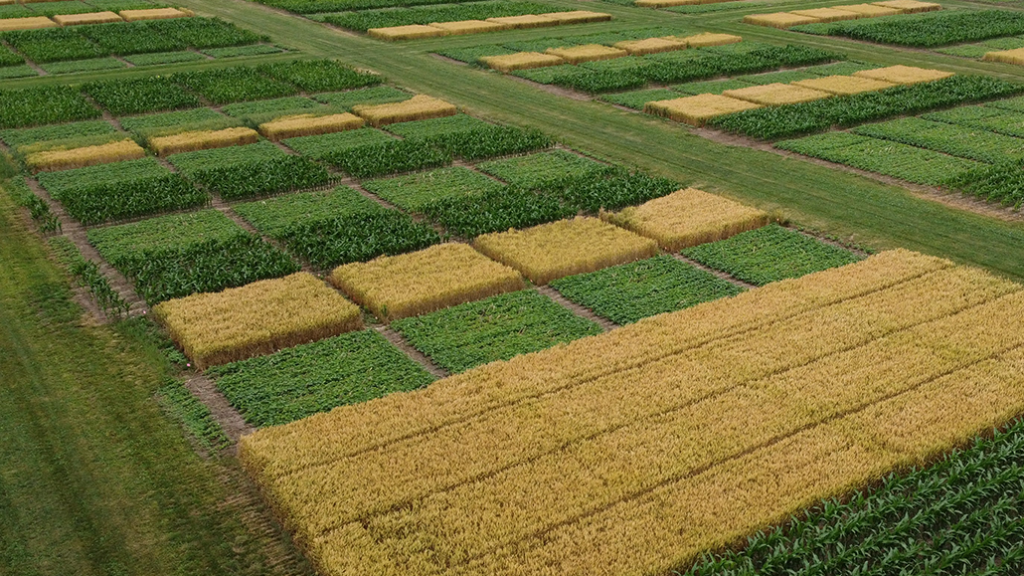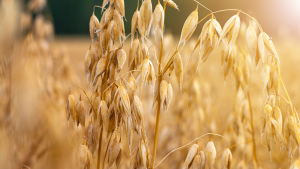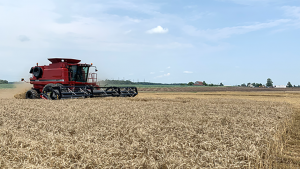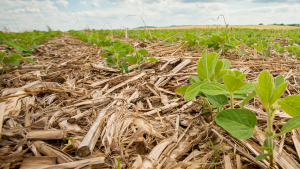Winter wheat benefits
LONG-TERM RESEARCH

RESEARCHERS HAVE PROVEN that adding winter wheat to a corn-soybean rotation not only increases yields, it also builds resilience against drought, helps reduce the need for nitrogen fertilizer, and improves soil health.
Scientists are looking at data from long-term rotation trials at University of Guelph research facilities in Elora and Ridgetown and demonstrating the significant advantages of growing wheat in rotation with corn and soybeans.
Dr. David Hooker, an associate professor in the Department of Plant Agriculture at the University of Guelph Ridgetown Campus, worked on the project with now-retired Dr. Bill Deen, who ran the research trials in Elora.
BY THE NUMBERS
The results were impressive. Corn yields were up more than 15 per cent and soybeans were up 13 per cent when wheat was added to the rotation.
Depending on the tillage system used, corn yields during dry years were up two to three per cent and soybeans up an astounding 20 to 30 per cent. Over a 26-year period, the researchers found that using wheat in the rotation reduced the need for, and costs of, nitrogen fertilizer.
Combining this rotation with reduced tillage also resulted in better soil health, by increasing nitrogen and organic carbon levels and benefiting soil microbes.
The long-term rotation plots are a gold mine of information for researchers and farmers because they have produced results for decades — in Elora for more than 40 years, and in Ridgetown for more than 25 years. The length of time in the same locations is important, Hooker says, because it takes at least 10 years of data to figure out if changing a management practice actually works, once the “system” has stabilized with the new change.
“These are applied results — growers can directly use data for deciding the best tillage system for their farm or the most appropriate crop location,” Hooker says. “We can also investigate trends around soil characteristics and crop productivity.”
“The effects of changes are sometimes not apparent in the short-term,” he says, adding that variable weather is a big factor, but so are changes in the soil.
For example, in switching from plowing to no-till, it takes several years for the system to stabilize from soil characteristics associated with a full-width tilled system to soil that’s aerated with worms and macropores, has a residue layer and contains more organic matter, especially close to the surface.
While the soil types are different in Elora and Ridgetown, the encouraging results were the same across rotations, he says.
ANECDOTES BACKED BY SCIENCE
“Farmers knew that corn and soybeans do better with wheat in the rotation compared to continuous corn, continuous soybeans or a corn-soybean rotation,” Hooker says. “These trials quantify this effect — we now have hard numbers to back it up.”
Since the research was published, there have been many farmers who have provided real-life testimonials to back up the science, as well.
“When we combine the anecdotal evidence with the science, it makes the story very strong,” he says.
Hooker notes that the corn-soybean rotation, which is most popular in the U.S. Midwest, produces the worst soil quality of all the rotations.
“I actually call it a crop alternation, not a rotation,” he says.
MORE UPSIDES
Another interesting benefit to putting winter wheat into the rotation is that it spreads the workload.
“On the farm level, instead of planting 100 per cent of crops in the spring, one-third of the planting can be done in the fall,” he says.
He says that, beyond all the benefits to corn and soybean yields, soil health, drought resilience and nitrogen availability, the wheat crop itself can be lucrative, especially in the fall of 2021.
“Wheat prices are relatively high, along with corn and soybeans at record levels,” he says, adding a cautionary note that wheat prices are subject to the vagaries of global markets and the wheat itself can be susceptible to winter kill and drought.
Hooker says farmers sometimes wait until spring to see what the stand is like before forward-contracting for the crop.
“Another factor is that, because so few wheat acres have been planted so far in Ontario, the price of wheat straw is expected to be at record levels in 2022,” he says.
Including wheat in the rotation also enables the use of cover crops.
“Because winter wheat is harvested in late July and August, you have four months to grow cover crops and produce biomass — and in the case of red clover, or the inclusion of other legumes, fix nitrogen in the soil so it will be available for the following corn crop,” he says.
BRINGING WHEAT OUT OF THE SHADOWS
With the data derived from this project, Hooker feels that wheat should be elevated to the status of soybeans and corn as a main crop, especially in the Great Lakes region where the environment allows it to flourish.
“Since we’ve quantified the effect of wheat — in terms of an enterprise on its own, and its effect on corn and soybean yields — it’s one of the most important crops, and highly competitive with corn and soybeans.”
This project is funded by the Canadian Agricultural Partnership, a five-year investment by Canada’s federal, provincial and territorial governments. •











